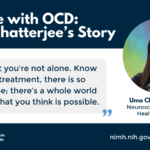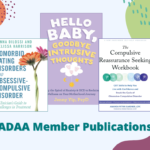Anxiety tends to strike at the most inconvenient moments, often targeting our deepest concerns and fears. This psychological distress can manifest in various ways, and it’s crucial to understand that the nature of our worries evolves as we progress through different phases of life. For instance, I recall some recent clients who represented a diverse range of life experiences:
- A 40-year-old whose father recently transitioned into retirement. Each time he discards unnecessary papers, his Obsessive-Compulsive Disorder (OCD) triggers thoughts that he is jeopardizing his parents’ financial security, leading him to fear impending bankruptcy.
- A second-year medical student, elated by achieving a high score on her first major examination, visited me in a state of anxiety, clutching a stack of emails from her time as the treasurer of her college sorority. She was consumed by the fear that she had made a grave mistake, worrying that the IRS would penalize her, potentially ruining her career.
- A high school freshman, overwhelmed by anxiety regarding her academic performance, has lost weight and withdrawn from social interactions, driven by the fear that her grades might hinder her college prospects. Despite her worries, she achieved an impressive 4.0 GPA in her first semester.
Each of these individuals sought therapy to address their pressing concerns, which were unique to their current circumstances. Not long ago, these worries were absent; for example, the 40-year-old’s father was still employed and financially secure, the medical student was just beginning her journey and was not yet focused on standardized tests, and the freshman was still in middle school, where academic pressure was less daunting and friendships were plentiful.
In the therapeutic process, it became essential for me to guide each client in recognizing that their anxiety was simply manifesting in new ways, reflecting their evolving life situations. The focus was not on the specific worries but rather on their reactions—whether it was through excessive worrying, avoidance behaviors, compulsive checking, or overstudying—that inadvertently empowered their anxiety. A pivotal part of their healing journey involved adopting a fresh perspective, allowing them to acknowledge, “This is merely anxiety (or OCD).”
While we had substantial work ahead, including engaging in real and imaginative exposures alongside mindfulness practices, the initial and most vital step was to shift their understanding: the core issue lay not in the worries themselves, but in their responses to anxiety. Recognizing this distinction is key to recovery, regardless of what specific concerns anxiety presents at various stages of life.
This blog was originally posted on Anxiety Training for Mental Health Professionals.













Your reflections on anxiety and its evolution through different life stages resonate deeply with anyone who has experienced its insidious nature. I find it particularly compelling how you highlight the specific triggers faced by individuals in distinct circumstances, like the 40-year-old worrying about his parents’ financial security or the medical student panicking over IRS regulations. These examples underscore the multifaceted nature of anxiety, revealing that what may seem irrational to one person can feel overwhelmingly real and significant to another.
Your thoughts really capture the essence of how personal experiences shape our understanding of anxiety. It’s true that what feels overwhelming to one person can seem trivial to another, often highlighting the unique pressures each stage of life brings.
“I’m glad you found those insights meaningful! If you’re interested in exploring more about navigating anxiety at different life stages, check out this resource that delves deeper into understanding and managing these feelings.”
https://www.mentalhealthtips.xyz/6nz4
I appreciate your thoughts on the piece. It’s fascinating how anxiety isn’t one-size-fits-all—it morphs and adjusts based on where we are in life and what we’re facing. The examples you mentioned—like the 40-year-old concerned about parents and the medical student stressing over IRS regulations—really illustrate how our social context and personal circumstances shape our worries.
I’m glad my reflections resonated with you! If you’re interested in exploring more insights and strategies for managing anxiety across different life stages, I invite you to check out this resource that dives deeper into these topics.
https://www.mentalhealthtips.xyz/4m2u
It’s true how anxiety can feel so different depending on our stage in life and the particular pressures we face. I’ve noticed this in myself; the worries I had in my twenties were often about career choices and relationships, while now I find my thoughts drifting more toward family responsibilities and future planning. It seems like each life stage brings its own unique set of stressors, some of which catch us off guard.
You’ve hit the nail on the head! It’s like life has a way of handing us a new set of stressors at every turn, like some kind of bizarre gift that keeps on giving. One minute you’re fretting over whether to swipe right or left on a dating app, and the next you’re trying to figure out how to balance work deadlines with family dinner prep like you’re starring in a culinary episode of “Survivor.”
You’ve captured that shift beautifully. It’s interesting how our concerns evolve as we move through different phases in life. In our twenties, we often feel this urgency to establish careers and navigate relationships, and then, as you mentioned, the focus changes to family responsibilities and planning for the future. It’s like each stage lays the groundwork for the next set of worries. Sometimes, those pressures can feel overwhelming, especially when we’re caught off guard, like you said.
“Absolutely, it’s fascinating how our focus shifts as we navigate life. If you’re looking for strategies to manage these evolving pressures, check out this resource that offers insights tailored to different life stages.”
https://www.mentalhealthtips.xyz/6nz4
It’s so true how those stages reshape our priorities and worries. When you’re in your twenties, that rush to figure things out can feel all-consuming, like every decision is pivotal. But as you pointed out, those pressures can shift suddenly, especially when family responsibilities come into play.
You’re spot on about how our concerns evolve; it’s one of those realities of life that we almost forget to appreciate because we’re too busy juggling everything. In our twenties, there’s this mad scramble to figure out who we are and what we want to achieve. The stakes often feel sky-high, and it can seem like everyone around us is just racing ahead – establishing careers, finding the “one,” or having those epic adventures that seem like a rite of passage.
You’ve really touched on something key about the different phases in our lives. It’s almost like we’re building a unique puzzle, where each piece represents our experiences and concerns. Those early years often feel like a sprint, and once we settle into the family routine or long-term goals, the pace becomes a bit different, but new challenges emerge.
“I’m glad you found the piece resonant! If you’re interested in some practical strategies to help manage these shifting priorities, I found a great resource that offers insights tailored to our different life phases. Take a look!”
https://www.mentalhealthtips.xyz/4m2u
You’ve touched on something really significant about how anxiety manifests at different life stages. It’s fascinating how our focus shifts as we grow; those early career dilemmas and relationship uncertainties often fade, giving way to heavier concerns like family and future stability. It’s almost like our worries evolve alongside our lives, reflecting the new responsibilities we take on.
“Absolutely, it’s fascinating how our concerns evolve over time. If you’re looking for strategies to navigate these shifting pressures, check out this resource that offers insights tailored to each life stage!”
https://www.mentalhealthtips.xyz/uqn6
You bring up such a relatable point about the evolving nature of anxiety through different phases of our lives. It’s fascinating how our minds can shift focus as we navigate the complexities of adulthood. In your twenties, it often feels like you’re standing at the crossroads, trying to figure out what path to take, whether it’s about diving into a career or navigating the twists and turns of relationships. There’s this vibrant energy, but it’s mixed with uncertainty, isn’t it?
Absolutely, it’s fascinating how our experiences shape our anxieties over time. If you’re interested in exploring strategies to navigate these shifts more effectively, check out this helpful resource!
https://www.mentalhealthtips.xyz/2pnn
It’s wild how our anxiety seems to switch identities like a chameleon, isn’t it? One minute, you’re losing sleep over whether to take that job offer in a different city, and the next, you’re stressing about how to help the kids with their math homework—like anyone really can help with that. It’s like life handpicks new worries for us based on some cosmic bingo card.
“Absolutely, it’s fascinating how our anxieties evolve with each life stage. If you’re looking for strategies to navigate these changing pressures, check out this resource that offers valuable insights on managing stress at every phase of life.”
https://www.mentalhealthtips.xyz/6nz4
That’s such a great observation about anxiety playing dress-up. It’s kind of wild how those worries just shift and change, right? One moment, you’re thinking about big life decisions, and then—bam—you’re knee-deep in math problems that seem to come straight from another planet. It’s almost like our minds like to keep us on our toes, picking a new worry based on whatever’s current in our lives.
You’re spot on with that chameleon comparison. It’s like our worries are always waiting in the wings, ready to jump into the spotlight when we least expect it. One minute, we’re sleepless over a job change, and the next, we’re knee-deep in multiplication tables, wondering if the common core is really “common” to anyone. It can feel like life is playing a game of stress Tetris, stacking new concerns right on top of the old ones.
You’ve hit on something really important about how anxiety evolves with us. It’s interesting to see how our focus shifts as we navigate through different stages of life. In our twenties, the external pressures like career choices and relationships often feel like the biggest mountains to climb. Those questions about what we’re supposed to be doing can become all-consuming.
Thank you for sharing your experience! It’s fascinating how our anxieties evolve. If you’re interested in exploring more about managing these shifting stressors, check out this resource that offers valuable insights and strategies for navigating life’s challenges at every stage.
https://www.mentalhealthtips.xyz/fpbo
It’s true, anxiety really does take on a unique shape based on life’s circumstances. When you think about it, worries tied to personal responsibilities, career pressures, or even the weight of societal expectations can feel heavy at any age. The examples you mentioned highlight how relatable these feelings are.
Absolutely! If you’re looking to delve deeper into understanding and managing anxiety at various life stages, I highly recommend checking out this insightful resource. It offers a wealth of strategies that could be really helpful!
https://www.mentalhealthtips.xyz/uqn6
You’ve hit the nail on the head with how anxiety operates like a chameleon—it really does adapt to the quirks of our lives. One minute, you’re worrying about your aging parents, and the next, you’re second-guessing whether you filled out your tax forms correctly. It’s a circus act, really, where the anxiety performers pull off some wild stunts.
I appreciate you sharing your thoughts on the article. It’s interesting how anxiety really can take on different forms depending on what stage we’re at in life, right? The triggers you mentioned for the 40-year-old or the medical student really illustrate this point. They might seem like everyday worries, but when you’re in the thick of it, those concerns can hit a lot harder than they appear on the surface.
It’s interesting you mention those specific triggers, as they really do illustrate how anxiety can take on different forms depending on where someone is in life. I often think about how societal pressures play a role in this too. For instance, the pressure to succeed financially or academically can amplify these anxieties.
I came across an insightful piece that discusses how various apps can effectively support those grappling with anxiety and depression, and it really complements the perspectives you’ve shared about the unique triggers we face at different life stages.
‘Apps for Depression and Anxiety: Proven Effectiveness Revealed’
https://www.mentalhealthtips.xyz/apps-for-depression-and-anxiety-proven-effectiveness-revealed/.
You raise a valuable point about how societal pressures can amplify anxiety, especially as we navigate different life stages. The demands to excel financially or academically are real, and they often come with the unspoken expectation that we should handle it all seamlessly. This creates a cycle where pressure feeds anxiety, which in turn affects our performance and overall well-being.
You bring up an important point about the societal pressures that often exacerbate anxiety and make it so much more complex to navigate. The expectations surrounding financial and academic success can weigh heavily on many people, turning life’s natural challenges into sources of significant stress. It’s fascinating and concerning how these pressures can curtail not just individual well-being but also personal growth.
I’m glad you found the discussion on triggers and societal pressures relatable! If you’re interested in exploring practical tools to support mental health, I highly recommend checking out this insightful piece on effective apps for managing anxiety and depression. You might find it very helpful! Here’s the link: [Apps for Depression and Anxiety: Proven Effectiveness Revealed](https://www.mentalhealthtips.xyz/apps-for-depression-and-anxiety-proven-effectiveness-revealed/).
https://www.mentalhealthtips.xyz/fpbo
You raise an important point about societal pressures and their impact on anxiety. Financial and academic expectations can feel like heavy weights, especially when we’re at different stages of our lives. It’s interesting how these pressures can morph our anxieties, making them feel more intense or even unmanageable at times.
Thank you for your thoughts! It’s so true how societal pressures can shape our experiences with anxiety. If you’re interested, I found this article that dives deeper into how various apps can provide helpful support for those facing these challenges—it might add another layer to our conversation. Check it out here: [Apps for Depression and Anxiety: Proven Effectiveness Revealed](https://www.mentalhealthtips.xyz/apps-for-depression-and-anxiety-proven-effectiveness-revealed/).
https://www.mentalhealthtips.xyz/uqn6
You’ve touched on a crucial aspect of the conversation about anxiety—the weight of financial and academic pressures. These influences can create a skewed sense of self-worth, often rooted in comparisons with others or in unattainable societal benchmarks. It’s not just about meeting personal goals; it’s about navigating a labyrinth of expectations that seem to evolve every year.
Thanks for sharing your reflections! If you’re curious about practical tools to navigate these pressures, I recently came across a resource that explores effective apps for managing anxiety and depression. It could be really beneficial to check out!
https://www.mentalhealthtips.xyz/fpbo
You’ve touched on a crucial aspect of anxiety that often gets overlooked: its personal and subjective nature. The triggers we face can vary dramatically, shaped by our life circumstances and the expectations we hold for ourselves and those around us. When we explore the anxiety of a 40-year-old worrying about a parent’s financial security versus a med student fretting over IRS regulations, it highlights how deeply intertwined our emotional responses are with our life stages.
“I’m glad my reflections resonated with you! If you’re interested in exploring more insights on managing anxiety through different life stages, check out this resource that delves deeper into these experiences.”
https://www.mentalhealthtips.xyz/4m2u
It’s interesting how you point out the variance in triggers based on our life circumstances—it really activates a further conversation about the nuances of anxiety. Take the example of the 40-year-old who is worrying about a parent’s financial security; it reflects not only their personal relationship but also broader societal expectations about responsibility and family. This can create a heavy emotional load that evolves with age and experience.
“I’m thrilled to hear that you connected with this topic! For more practical tips and insights on navigating anxiety through various life stages, consider exploring this helpful resource.”
https://www.mentalhealthtips.xyz/2pnn
You’ve really captured the complexities of anxiety and how they can shift so significantly with life experiences. The example of the 40-year-old worrying about a parent’s financial security certainly highlights the intertwining of personal relationships with societal expectations. There’s definitely a sense of duty that can weigh heavily on individuals at that stage of life. I find it fascinating how these pressures are often amplified by social media and constant connectivity, which can make it feel like everyone else is managing their responsibilities perfectly.
You’ve hit on something really important. The pressure to juggle personal relationships and societal expectations can feel pretty overwhelming, especially when you reach that stage where you’re expected to have it all figured out. That 40-year-old dealing with their parent’s financial worries is a perfect example of how life gets messy when love and duty collide.
Thank you for your insightful comment! If you’re interested in exploring how to navigate these pressures effectively, check out this resource that offers valuable strategies for managing anxiety in today’s connected world.
https://www.mentalhealthtips.xyz/6nz4
I appreciate your thoughts on the evolution of anxiety and how it manifests differently at various life stages. It really is fascinating to see how our individual circumstances shape our experiences with anxiety—and those specific triggers you mentioned can paint such a vivid picture of where we are in life.
“Thank you for your thoughtful insights! If you’re interested in exploring more about the complexities of anxiety across different life stages, I invite you to check out additional resources that delve deeper into this important topic.”
https://www.mentalhealthtips.xyz/uqn6
Your insights on how anxiety evolves with different life stages resonate deeply with me. It’s fascinating—and often unsettling—how our fears can be tied to specific life events or transitions, like retirement or academic pressures. I remember a close friend who became anxious during her final year of college, constantly worrying about not living up to expectations and the potential impact on her future job prospects. It’s as if the weight of our responsibilities amplifies those internal fears.
It’s interesting how our experiences shape our understanding of anxiety, isn’t it? Your friend’s story captures that pressure perfectly. As we transition through life, those pressures can vary immensely—what seemed like a distant worry in high school suddenly feels much more immediate in college, especially with the looming reality of the job market.
You’ve touched on a really important aspect of how anxiety intertwines with our life experiences. It’s not just the event itself, but the weight we place on it that often transforms a typical worry into something much more consuming. Your friend’s struggle during her final year of college is a situation many can relate to—facing a big transition can feel like standing at a cliff’s edge, where the fears around potential failure seem overwhelming.
“Thanks for sharing your thoughts! If you’re interested in exploring more about how to navigate these anxieties, check out this insightful resource that delves deeper into managing fears during life’s transitions.”
https://www.mentalhealthtips.xyz/fpbo
Your exploration of anxiety’s evolving nature really resonates with me. I relate to the experiences you shared, especially the student worrying about past decisions—I remember feeling overwhelmed during my own college years, constantly dissecting every choice I made. It’s fascinating how our minds can latch onto seemingly minor details, spiraling into larger fears.
It’s wild how those college years play tricks on our minds, right? I mean, we can turn a minor decision—like what to have for lunch—into a full-blown existential crisis. “Should I have the turkey sandwich or the veggie wrap? Will this choice define my future?”
It’s interesting how college years can become a crucible for our insecurities and anxieties. A lot of us find ourselves in that relentless cycle of dissecting choices, as if there’s a hidden formula for a “perfect” path ahead. The tendency to fixate on every small detail can feel paralyzing, especially when the stakes seem so high.
I really resonate with the idea that anxiety evolves as we move through different life phases. I’ve noticed this in my own life too—like when I transitioned from college to the workforce, I suddenly found myself worrying about job stability and financial independence. It’s interesting how our fears often reflect our life changes. The examples you shared are so relatable; for many, like the medical student, success can become a double-edged sword, filled with pressure and the fear of falling short.
It’s great to hear how you’ve connected with the idea that anxiety changes as we navigate different life phases. Transitioning from college to the workforce is a significant shift, and it’s not uncommon for those feelings of uncertainty to emerge, especially when it comes to job stability and financial independence. Those are real concerns that can weigh heavily on anyone’s mind.